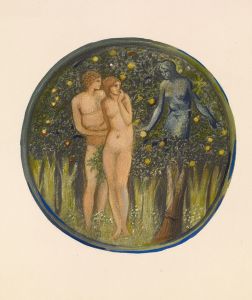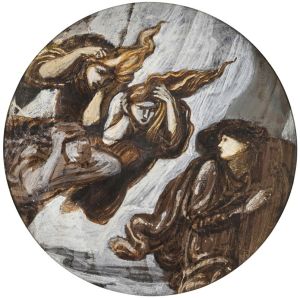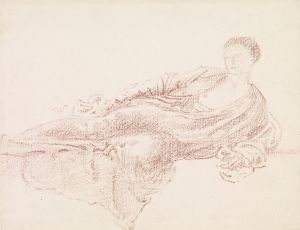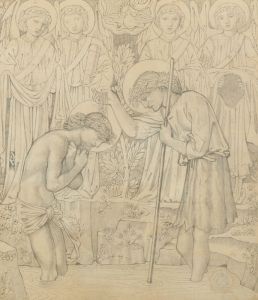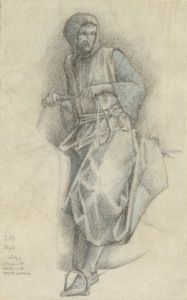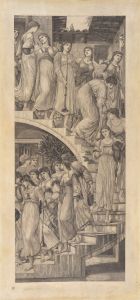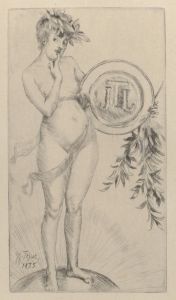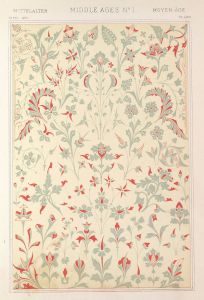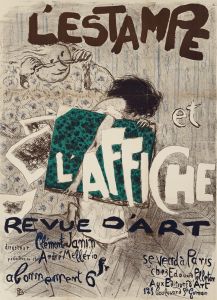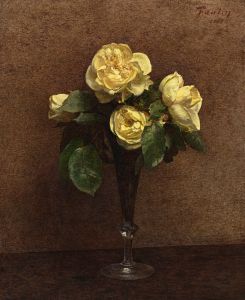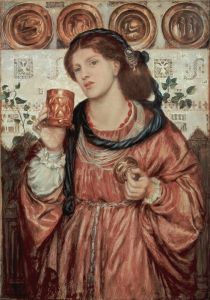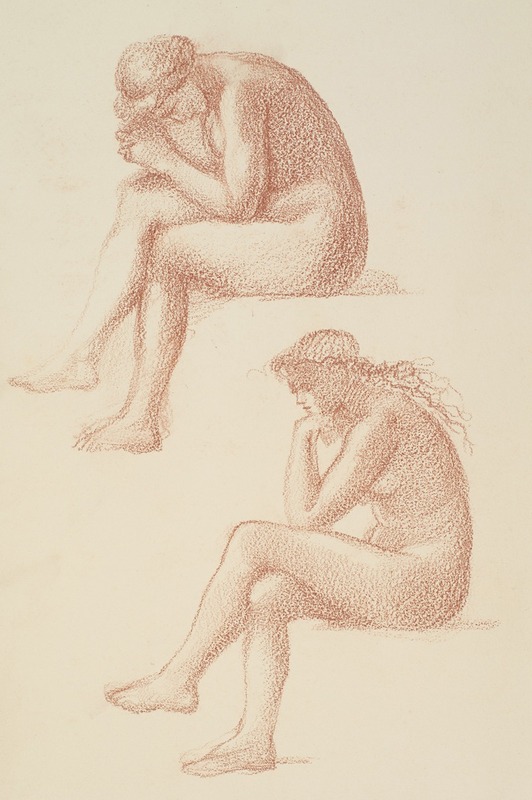
The Lament – Nude Female – Two Studies for the Figure on the Right
A hand-painted replica of Sir Edward Coley Burne-Jones’s masterpiece The Lament – Nude Female – Two Studies for the Figure on the Right, meticulously crafted by professional artists to capture the true essence of the original. Each piece is created with museum-quality canvas and rare mineral pigments, carefully painted by experienced artists with delicate brushstrokes and rich, layered colors to perfectly recreate the texture of the original artwork. Unlike machine-printed reproductions, this hand-painted version brings the painting to life, infused with the artist’s emotions and skill in every stroke. Whether for personal collection or home decoration, it instantly elevates the artistic atmosphere of any space.
Sir Edward Coley Burne-Jones, a prominent figure in the Pre-Raphaelite movement, created "The Lament – Nude Female – Two Studies for the Figure on the Right" as part of his exploration of mythological and allegorical themes. Burne-Jones, born in 1833 in Birmingham, England, was known for his detailed and dreamlike paintings that often drew inspiration from medieval and classical sources. His works are characterized by their romanticism and intricate detail, reflecting the ideals of the Pre-Raphaelite Brotherhood, which sought to return to the abundant detail, intense colors, and complex compositions of Quattrocento Italian art.
"The Lament" is a study that showcases Burne-Jones's skill in depicting the human form, particularly the female nude, which was a recurring subject in his oeuvre. This piece is a preparatory study, meaning it was likely created as part of the artist's process in developing a larger, more complete work. Such studies were common practice for artists of the time, allowing them to experiment with composition, form, and technique before committing to the final piece.
In "The Lament," Burne-Jones focuses on the figure of a nude female, capturing her in two different poses. These studies reveal his meticulous attention to anatomy and his ability to convey emotion through posture and expression. The figures are rendered with a softness and fluidity that highlight Burne-Jones's mastery of line and form. The choice of a lamenting figure suggests themes of sorrow or mourning, which are prevalent in many of Burne-Jones's works, often reflecting the melancholic beauty that he sought to capture.
Burne-Jones's art was heavily influenced by his close association with other members of the Pre-Raphaelite Brotherhood, including Dante Gabriel Rossetti and William Morris. This influence is evident in his use of rich symbolism and his dedication to craftsmanship. His works often feature elongated figures and a sense of otherworldliness, inviting viewers into a realm of fantasy and introspection.
"The Lament – Nude Female – Two Studies for the Figure on the Right" is a testament to Burne-Jones's artistic process and his commitment to exploring the depths of human emotion through art. While the specific context or intended final piece for this study is not detailed, it remains an important example of his preparatory work and his ability to convey complex themes through simple studies.
Burne-Jones's legacy is marked by his contribution to the revival of interest in medieval and early Renaissance art, as well as his influence on the Symbolist movement. His works continue to be celebrated for their beauty, technical skill, and emotional depth, securing his place as one of the leading artists of the 19th century.





